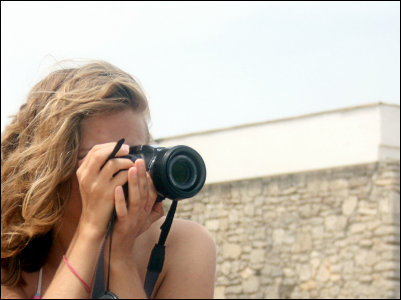Experts explain 'How much has the camera of the 4th generation iPad Pro that adopted the first dual lens evolved?'

LIDAR: Peek Into The Future With iPad Pro-Halide
https://blog.halide.cam/lidar-peek-into-the-future-with-ipad-pro-11d38910e9f8
◆ Front camera
The front camera of the 4th generation iPad Pro is a wide-angle camera with 7 megapixels, a focal length of 32mm (35mm format equivalent) and an F value of 2.2, and has the same performance as the 3rd generation.
Wide-angle rear camera
The 4th generation iPad Pro is the first model in the iPad series to have a second camera on the back. The rear camera module of the 4th generation iPad Pro is shaped like a square, like the iPhone 11/11 Pro, and has two cameras. One of them is a wide-angle camera with 12 megapixels, a focal length of 29 mm (35 mm format equivalent), and an F value of 1.8, which is the same as the third generation.
However, according to Mr. Wiz, the sensitivity range of the sensor is slightly wider in the 4th generation. The 3rd generation A12X Bionic processor had a 7-core GPU, while the 4th generation iPad Pro A12Z Bionic processor had an 8-core GPU, so the ISO of the camera itself Wiz believes that the software's image processing may have improved rather than the sensitivity changing.

The wide-angle camera mounted on the 3rd and 4th generation iPad Pro is a 12-megapixel, focal length 26 mm (35 mm equivalent), F-number 1.8 wide-angle camera mounted on the iPhone 11/11 Pro. The angle of view is slightly narrower than that.
◆ Ultra wide-angle rear camera
In addition to the wide-angle camera, the 4th generation iPad Pro has a new ultra-wide-angle camera. The ultra wide-angle camera is also installed on the iPhone 11/11 Pro, but its specifications are slightly different.

The ultra wide-angle camera of the iPhone 11/11 Pro has 12 megapixels, a focal length of 13 mm (35 mm format equivalent), an F value of 2.4, ISO sensitivity of 21 to 2016, shutter speed of 15,000 to 1 second, and image size of 4032. Specifications of pixels x 3024 pixels.

On the other hand, the ultra wide-angle camera of the 4th generation iPad Pro has 10 megapixels, focal length of 14 mm (35 mm format equivalent), F value of 2.4, ISO sensitivity of 19 to 1824, shutter speed of 12,000 to 1 second to 1 second The size is 3680 pixels x 2760 pixels. In the 4th generation iPad Pro, the focal length of the ultra wide-angle camera is 1mm longer, and the angle of view is slightly narrower than the iPhone 11/11 Pro like the wide-angle camera, but it is not so noticeable for ordinary use. You can say the difference.
Below is a side-by-side comparison of a photo (left) taken with the ultra wide-angle camera of the iPhone 11 Pro and a photo (right) taken with the ultra-wide-angle camera of the 4th generation iPad Pro. 'I find it more interesting that the camera's resolution is reduced by 2 megapixels, rather than the difference in focal length,' said Wiz.

◆ LiDAR sensor
One of the newest features of the 4th generation iPad Pro is the LiDAR sensor in the rear camera module. The 4th generation iPad Pro was the first LiDAR sensor to be installed on an Apple device, and Wiz said, `` I am surprised that the new image capture technology was first installed on the iPad before the iPhone. '

LiDAR is an abbreviation for Light Detection and Ranging.It emits a very short light from a sensor and measures the time it takes for it to bounce to accurately measure the distance to the target. It is a technology that can be measured. This accurate distance measurement enables a more accurate AR experience on the 4th generation iPad Pro. It is possible to accurately measure a person's height or room layout without swinging the device and performing calibration.

Also, if it is furniture size, it seems that it can also be 3D scanned and raised to a CG model. Although Wiz is still in the proof-of-concept stage, he is developing an app called 'Esper' that captures 3D in real time by combining a camera and a LiDAR sensor.

However, according to Mr. Wiz, the accuracy of the 4th generation iPad Pro's LiDAR sensor has not been applied to portrait shooting of the rear camera. An electronics repair company, iFixit,

And the dot pattern of the infrared sensor for the face authentication system '

According to Wiz, 'The dot pattern of the LiDAR sensor is basically optimized to scan the structure in the room, it is not enough to accurately distinguish a person's face.' However, if machine learning by Apple's neural engine is combined, portrait shooting is possible even if the depth data is rough, so Mr. Wiz is not 'The rear camera of the 4th generation iPad Pro can not shoot portrait' However, the term 'the rear camera of the 4th generation iPad Pro does not support portrait photography' is used only.
'While the fourth-generation LiDAR sensor is not yet a complement to traditional photography, the LiDAR sensor itself will be powerful and open the door to new applications that make creativity a reality.' I said.
Related Posts:






